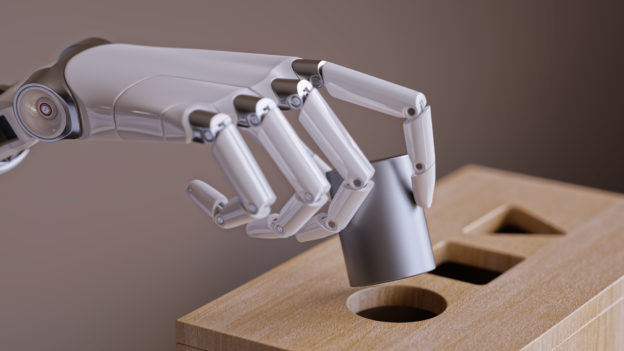While browsing the internet, you may have come across a term that sounds straight out of a sci-fi novel — machine learning.
So what is machine learning, and when does the robot takeover begin?
There’s no reason to panic yet. Machine learning is a pretty tame application of the concept of artificial intelligence, so humans should be safe for now.
What this groundbreaking technology actually means for us is a new and more powerful way to analyze data. Read on for an overview of how machine learning works.
What Is Machine Learning?
At its core, any kind of learning is about improving decision-making through experience.
If you burn your hand on a hot stove as a child, your brain will correlate touching a hot stove with getting burned. If it happens again, the correlation grows even stronger.
Learning is largely about using experience to make more reasoned predictions.
Based on my past experience, I know that if I put my hand on a hot stove, I’ll likely feel pain.
Machine learning isn’t all that different in concept from human learning. It’s about creating accurate predictions based on repetition and experience. But instead of using a brain full of memories, a computer learns through a series of algorithms and a growing set of data points.
How Machine Learning Works
In many ways, machine learning works backward from traditional programming.
In programming, a coder writes a formula and then provides a set of data. The computer plugs the data into the programmed model and provides the resulting output.
With machine learning, the computer writes its own program. It takes the initial data as well as a given final result and develops a logical methodology for arriving from Point A to Point B.
A real-world example of how machine learning works are with weather forecasts.
A regular static program would take atmospheric conditions as a set of data points and then plug them into a man-made model. The result would be a weather forecast, including temperature and precipitation.
In contrast, a machine learning system would take the previous day’s atmospheric conditions and then the actual observed temperatures and precipitation of the day. The computer then creates its own model for future use.
The computer-made model likely wouldn’t be very accurate based on data from only one day. But as more days pass and more data is collected, the computer is continuously re-evaluating, re-writing, and improving its own formula.
The big idea here is that with enough time and data, the programs written by machine-learning systems will become more accurate and practical than anything humans could create.
Applications of Machine Learning
Don’t worry, machine learning likely won’t be stealing many jobs anytime soon.
What machine learning can accomplish is faster and richer analysis of massive collections of data. In essence, it’s super-smart data mining.
Big data is already used to make more efficient decisions in a variety of industries. Machine learning systems will be able to do even more with all that information for groundbreaking advancements in healthcare, cloud computing, and every other field.
The sky’s the limit for the real-world benefits of machine learning. Already it’s helping to give you better search results on Google and great entertainment recommendations on Netflix. As the technology grows, the possibilities are endless.
What can machine learning do for your business? Contact The AME Group to speak with an advisor and learn more about how machine learning works.

